Bacterial RNA Contributes to the Down-Modulation of MHC-II Expression on Monocytes/Macrophages Diminishing CD4+ T Cell Responses
- PMID: 31572389
- PMCID: PMC6753364
- DOI: 10.3389/fimmu.2019.02181
Bacterial RNA Contributes to the Down-Modulation of MHC-II Expression on Monocytes/Macrophages Diminishing CD4+ T Cell Responses
Abstract
Brucella abortus, the causative agent of brucellosis, displays many resources to evade T cell responses conducive to persist inside the host. Our laboratory has previously showed that infection of human monocytes with B. abortus down-modulates the IFN-γ-induced MHC-II expression. Brucella outer membrane lipoproteins are structural components involved in this phenomenon. Moreover, IL-6 is the soluble factor that mediated MHC-II down-regulation. Yet, the MHC-II down-regulation exerted by lipoproteins was less marked than the one observed as consequence of infection. This led us to postulate that there should be other components associated with viable bacteria that may act together with lipoproteins in order to diminish MHC-II. Our group has recently demonstrated that B. abortus RNA (PAMP related to pathogens' viability or vita-PAMP) is involved in MHC-I down-regulation. Therefore, in this study we investigated if B. abortus RNA could be contributing to the down-regulation of MHC-II. This PAMP significantly down-modulated the IFN-γ-induced MHC-II surface expression on THP-1 cells as well as in primary human monocytes and murine bone marrow macrophages. The expression of other molecules up-regulated by IFN-γ (such as co-stimulatory molecules) was stimulated on monocytes treated with B. abortus RNA. This result shows that this PAMP does not alter all IFN-γ-induced molecules globally. We also showed that other bacterial and parasitic RNAs caused MHC-II surface expression down-modulation indicating that this phenomenon is not restricted to B. abortus. Moreover, completely degraded RNA was also able to reproduce the phenomenon. MHC-II down-regulation on monocytes treated with RNA and L-Omp19 (a prototypical lipoprotein of B. abortus) was more pronounced than in monocytes stimulated with both components separately. We also demonstrated that B. abortus RNA along with its lipoproteins decrease MHC-II surface expression predominantly by a mechanism of inhibition of MHC-II expression. Regarding the signaling pathway, we demonstrated that IL-6 is a soluble factor implicated in B. abortus RNA and lipoproteins-triggered MHC-II surface down-regulation. Finally, CD4+ T cells functionality was affected as macrophages treated with these components showed lower antigen presentation capacity. Therefore, B. abortus RNA and lipoproteins are two PAMPs that contribute to MHC-II down-regulation on monocytes/macrophages diminishing CD4+ T cell responses.
Keywords: Brucella abortus; MHC; antigen presentation/processing; bacterial RNA; monocytes/macrophages.
Copyright © 2019 Milillo, Trotta, Serafino, Marin Franco, Marinho, Alcain, Genoula, Balboa, Costa Oliveira, Giambartolomei and Barrionuevo.
Figures


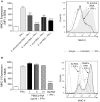


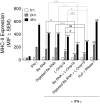
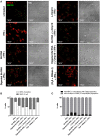
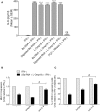
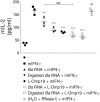
Similar articles
-
Brucella abortus down-regulates MHC class II by the IL-6-dependent inhibition of CIITA through the downmodulation of IFN regulatory factor-1 (IRF-1).J Leukoc Biol. 2017 Mar;101(3):759-773. doi: 10.1189/jlb.4A0416-196R. Epub 2016 Oct 20. J Leukoc Biol. 2017. PMID: 27765819
-
B. abortus RNA is the component involved in the down-modulation of MHC-I expression on human monocytes via TLR8 and the EGFR pathway.PLoS Pathog. 2017 Aug 2;13(8):e1006527. doi: 10.1371/journal.ppat.1006527. eCollection 2017 Aug. PLoS Pathog. 2017. PMID: 28767704 Free PMC article.
-
Brucella abortus inhibits major histocompatibility complex class II expression and antigen processing through interleukin-6 secretion via Toll-like receptor 2.Infect Immun. 2008 Jan;76(1):250-62. doi: 10.1128/IAI.00949-07. Epub 2007 Nov 5. Infect Immun. 2008. PMID: 17984211 Free PMC article.
-
Inhibition of antigen presentation by Brucella: many more than many ways.Microbes Infect. 2019 Apr-May;21(3-4):136-142. doi: 10.1016/j.micinf.2018.12.004. Epub 2019 Jan 21. Microbes Infect. 2019. PMID: 30677519 Review.
-
Bacterial antigen delivery systems: phagocytic processing of bacterial antigens for MHC-I and MHC-II presentation to T cells.Behring Inst Mitt. 1997 Feb;(98):197-211. Behring Inst Mitt. 1997. PMID: 9382741 Review.
Cited by
-
Brucella abortus RNA does not polarize macrophages to a particular profile but interferes with M1 polarization.PLoS Negl Trop Dis. 2022 Nov 28;16(11):e0010950. doi: 10.1371/journal.pntd.0010950. eCollection 2022 Nov. PLoS Negl Trop Dis. 2022. PMID: 36441810 Free PMC article.
-
Extracellular Vesicles from Pseudomonas aeruginosa Suppress MHC-Related Molecules in Human Lung Macrophages.Immunohorizons. 2020 Aug 20;4(8):508-519. doi: 10.4049/immunohorizons.2000026. Immunohorizons. 2020. PMID: 32819967 Free PMC article.
-
Pathogenic Leptospires Limit Dendritic Cell Activation Through Avoidance of TLR4 and TRIF Signaling.Front Immunol. 2022 Jun 22;13:911778. doi: 10.3389/fimmu.2022.911778. eCollection 2022. Front Immunol. 2022. PMID: 35812397 Free PMC article.
-
Metabolic phenotype of bovine blood-derived neutrophils is altered in milk.Sci Rep. 2025 Mar 19;15(1):9401. doi: 10.1038/s41598-025-93929-y. Sci Rep. 2025. PMID: 40108313 Free PMC article.
-
Activation of mucosal immunity as a novel therapeutic strategy for combating brucellosis.Front Microbiol. 2022 Dec 22;13:1018165. doi: 10.3389/fmicb.2022.1018165. eCollection 2022. Front Microbiol. 2022. PMID: 36620020 Free PMC article. Review.
References
Publication types
MeSH terms
Substances
Grants and funding
LinkOut - more resources
Full Text Sources
Research Materials

